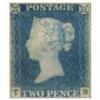Watchmaker collets, Maintenance.
-
Recently Browsing
- No registered users viewing this page.
-
Topics
-
Posts
-
Can you not remove the pin from the existing spring and just use that? I think if you did something like this you'd need to make sure the piece you cut off was long enough so the thickness didn't interfere with the stud staying in the hole.
-
Hmm ... I can't find anything with a pin like this. I guess with a lathe I could make the pin, then drill a hole in a regular mainspring and rivet the pin to it. Can't really see me doing that without a watchmaker's lathe, though. Am I going to have to shelve the watch because I can't replace the mainspring? There has to be another way. I wonder if I could cut off the end of the existing spring and use it as a catch for a modern manual-wind spring to hook on to?
-
By EtherJunky · Posted
Восток 2403/581096 So a while back I discovered the website of the Vostok factory. It didn't come up on google but was mentioned in some youtoob video. The information was all in Russian and the English translation wasn't fantastic. The "Put in Basket" button was translated to "Put in Garbage". The prices mentioned were also rather jarring. When looking at this piece the numbers were "Three THOUSAND .... two HUNDRED...." and I was thinking 'aww that's a big number' .... "err rubles". I googled the exchange rate and it turned out to only be 30 something squid, so I put in garbage. The postage said "eight HUNDRED ... and seventy!" and again I was thinking 'aww that's a big number' ... "err rubles". It turned out to only be around 8 quid for international delivery, so I threw in an Amphibia for about five THOUSAND - coz I'm such a big spender. I've replaced the straps on multiple occasions and have been abusing this ever since. Funnily enough fleabay would occasionally have similar models (not the sexy tilted dial) for about double the price. So it appears to be a decent business model. Unfortunately nowadays, and not entirely due to politics, it's gotten trickier to order these. The actual payment would need a slight workaround, and I wouldn't trust the Baltic postmen either (they appear to have a reputation of having sticky fingers). For anyone interested, and the prices would've changed over the years, and I'm not sure if I'm allowed to put url's in comments because I wasn't paying attention when reading the forum rules, is this: https://online.vostokinc.ru -
Looking at the genuine Bergeon holder I expect the 0.8mm will be too big. Edit You should be able to check with the pins out of the holder if they pass through the surround to the jewel.
-







Recommended Posts
Join the conversation
You can post now and register later. If you have an account, sign in now to post with your account.
Note: Your post will require moderator approval before it will be visible.